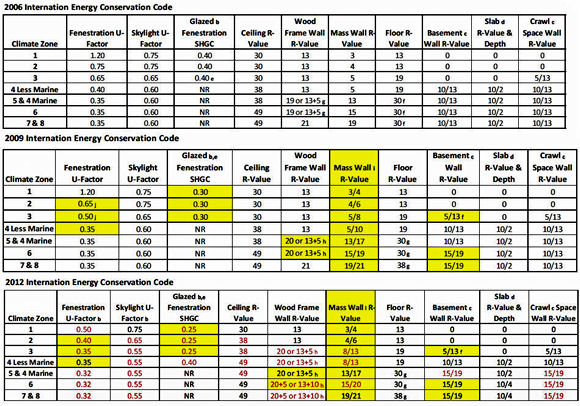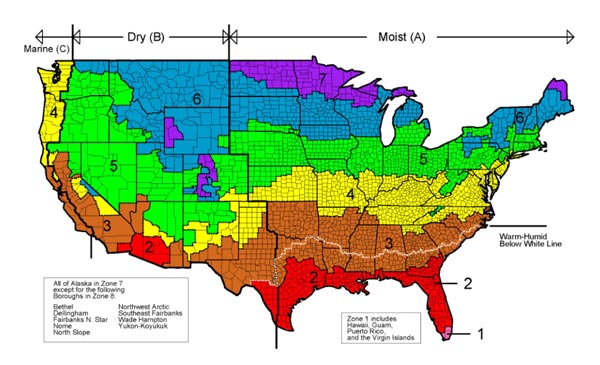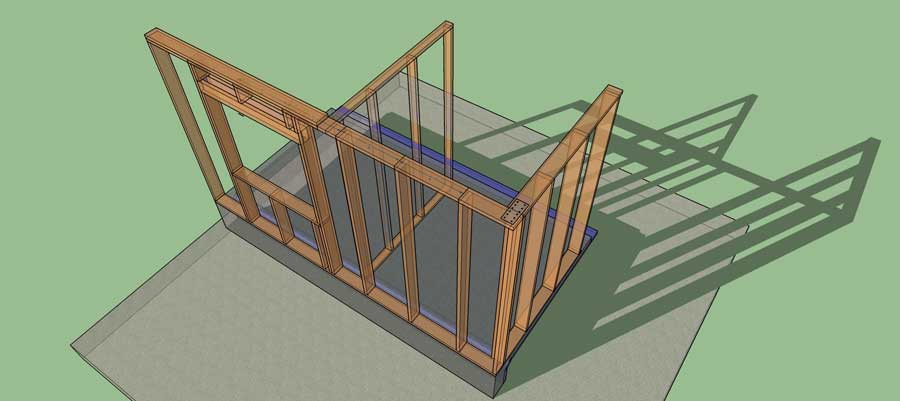New energy codes are coming very soon, and many states are jumping to the most aggressive one
Ed's note: This is a very lightly edited guest post by Sean Lintow, a home performance and remodeling contractor in Naperville, IL The original version is on his blog, the Homeowner and Trades Resource Center. Sean is a contractor in Illinois, so this post is directed towards Illinois builders and remodelers, but its content is generally applicabe to almost all builders, remodelers, and trade contractors.
As a brief recap: all states must adopt the 2012 IECC and ASHRAE Standard 90.1-2013 (or better) no later than February 17th, 2017. The 2015 code must then be adopted by June 12th of 2017.
Many states are electing to skip the 2012 code all together and are pushing for the 2015 version for some very good reasons.
38 states elected to go with a mandatory “state-wide” code including Illinois. How does that saying go–forewarned is forearmed? While your local maybe years away from adopting the latest versions of the IRC and IECC knowing in advance what is coming down the pike will save headaches later.
Ready for this, there are other changes coming that are likely to impact you no matter what your jurisdiction does. As for how much… With that here is a quick look at some of the most notable items.
The 2015 IECC:
There are very few notable changes between the 2012 Energy Code and the 2015 version at first glance. Further digging and crunching of the numbers shows only a small percentage increase as DOE reports a whopping 1.03% of energy savings. (For Climate Zone 5 – it is only .87%) With that, there are quite a few interesting changes and some reasons that many locals have decided to skip the 2012 code altogether and plan on making the leap straight to the 2015.
Compliance and Adoption: As mentioned in what is an Energy Code per the American Recovery and Reinvestment Act of 2009, States have two years (after DOE issues it’s final analysis of a code change) to adopt or sumbit their changes to DOE which shows that they are complying with or meet the latest adaptation. DOE issued final determination June 11th, 2015 making the effective date June 12th of 2017.
- Insulation levels: If you thought that insulation levels would increase in this code cycle, well you would be mistaken as they remain exactly the same. One notable change – Continuous insulation is now fully spelled out.

- New Chapter: Chapter 5 was added which covers “Existing” Buildings – thus clearing up some confusion on what must be brought up to code and when (we will cover this more in detail later)
- 3 Compliance Paths: There is a new ERI Compliance Option (Energy Rating Index aka HERS) along with the Prescriptive and Performance paths. This is based on Climate Zone and was an item that NAHB fought hard to get into the codes.
- Climate Zones 1 and 2 = HERS 52
- Climate Zone 3 = HERS 51
- Climate Zones 4 and 6 = HERS 54
- Climate Zone 5 = HERS 55
- Climate Zones 7 and 8 = HERS 53

- Duct Testing: Duct Testing is still mandatory (403.3.3), however; unless you are simply following the “prescriptive” path (403.3.4), the allowable under the ERI (performance path) now equals whatever the test reads (or your AHJ says). You are still required to seal the ducts and insulate them.
- Air Sealing / Leakage: This section was tightened up more but the allowable Blower Door / Envelope Leakage Test numbers stay the same (Climate Zones 1-2 = 5 ACH while everyone else is at 3 ACH)
- Floors and Insulation: Can I get an amen finally? Under 402.2.8 one is no longer required to have the insulation in direct contact with the floor sheathing as long as there is sheathing or insulation on the underside and the rim area meets the wall level of insulation.
- 402.2.4 – Rooms Containing Fuel Burning Appliances: Unless you are using direct-vented equipment this one can come as a nasty shock as all open combustion equipment must pull its air from outside and be located outside the thermal envelope unless it is located in a completely isolated and insulated room
Big Water Heater Change:
UPDATED: Starting April 16th 2015 all new water heaters must meet some newer standards which is getting pretty close to the death knell for naturally-vented appliances. For example gas vented appliances 55 gallons and under must now have an energy factor of .675 – (.0015 Vs) aka Volume of Storage or better (electric is .96 – .0003Vs). In short, a 40 gallon gas water heater must have an EF of .615 (.75-.06) while a 50 gallon would be a .6.
Want a 75 gallon tank? Well anything above 55 gallons requires a .8012 gas (-.00078 Vs) or 2.057 (-.00113 Vs) for electric or better requiring one to essentially go with a Heat Pump or condensing style unit.
This has prompted companies like AOSmith to start notifying plumbers, builders and others that they need to start planning for it now. In essence for units 55 gallons and under they are advising builders that the new units will be 2 to 3″ inches wider and taller than what they have now so they need to account for this if they are placing them in a utility closet or room. For units 55 gallons and up they are going to require a ton more room (and equipment / ducting in some cases) which would require even more changes.
*Many thanks to David Butler for catching me up on the Vs area as I missed that on my original read through.
ENERGY STAR for appliances:
New ENERGY STAR® requirements have gone into effect for many appliances (starting September 15th of this year) with new ones coming January 1st for items like clothes dryers (its about time dryers are included). So for those building ENERGY STAR homes or looking for the most efficient appliances out there, check to see what version it falls under and spec accordingly.
—Sean Lintow Sr. is a certified RESNET HERS Rater, AEE Certified Energy Auditor, EPA Indoor airPLUS Verifier and 3rd Generation Builder and Remodeler in Naperville, IL. His company is SLS Construction and Building Solutions. He also contributes regularly to the Homeowner and Trades resource Center — a blog about building.












